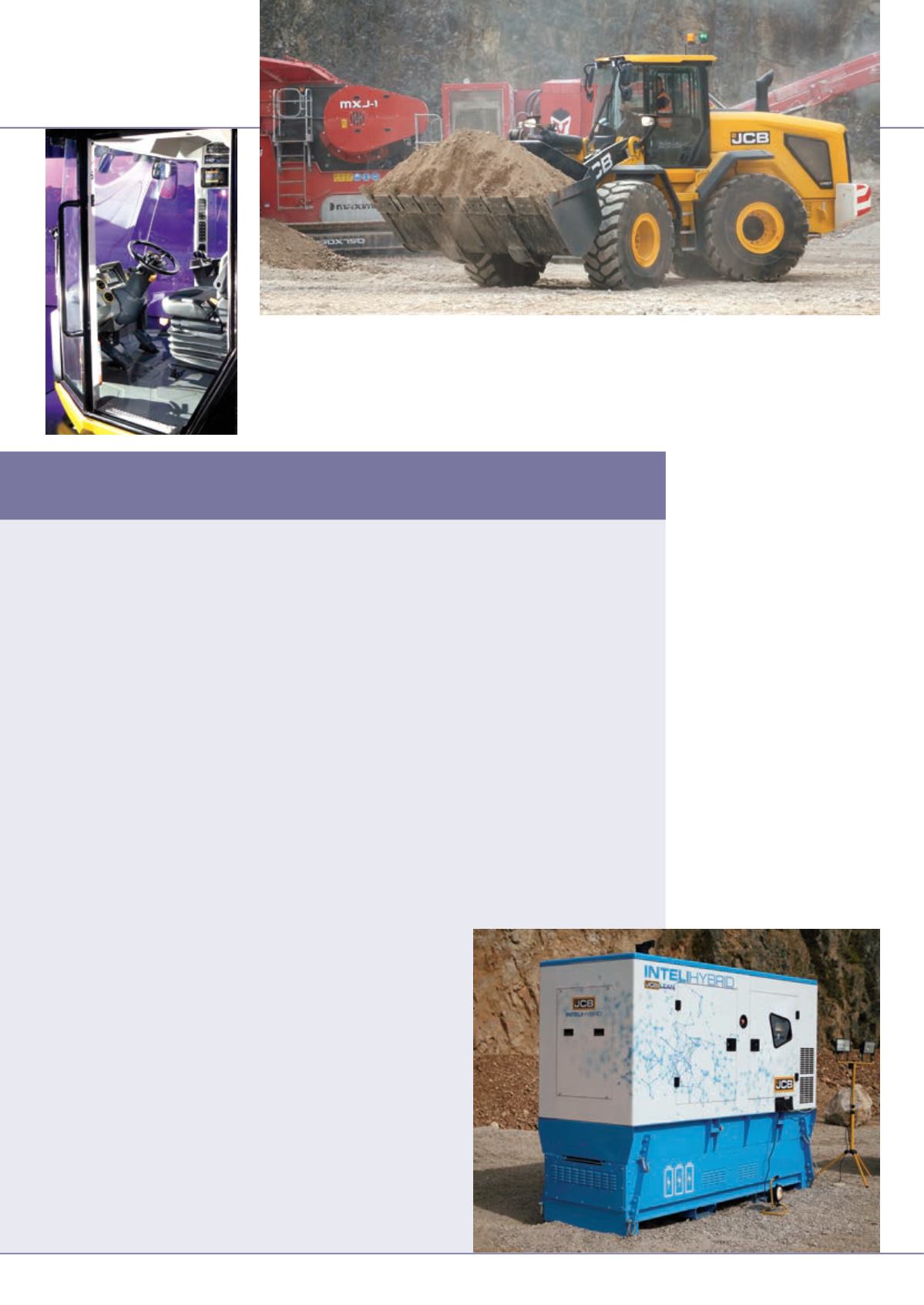
EQUIPMENT
64
international
construction
october 2014
JCB
Operators will appreciate the
reduction in internal noise – it
is now just 70dB(A) in the cab,
and other features include a high
specification seat and 7" (178mm)
LCDmonitor.
Selection of the powermodes has
been simplifiedwith the use of a
single rotary control. As this dial is
turned the engine speed increases
through four pre-set power bands,
and there is also a separate power
boost function.
Meanwhile in thewheeled
excavator sector, JCBhas added
the 20 tonne class JS200W and
the 17.5 tonne JS175W, which
are nowpowered by theTier 4
Interim/Stage IIIB JCBEcomax
engine.Though smaller in capacity
than the previous engine, JCB
says this offers the same 129 kW
output, with an improved 690Nm
of torque, yet as well as up to 10%
lower fuel consumptionwithno
loss of performance.
Other improvements are similar
to those on the JS300, with a new
monitor and rotary power control
in the cab. A change to the control
systemmeans steering thewheeled
excavators cannow be handled
from a rocker switch on the
right-hand joystick, whichmeans
operators canmove and steer the
machinewhile alsomoving the
boom.
For travelling between sites
there is a newhighwaymode that
isolates the hydraulics from the
J
CBPower Products has unveiled a brand new hybrid generator alongwith its new ten-model QS range of standard
machines to address themassmarket. TheQS range is powered by JCB’s own engines or ‘JCBDiesel by Kohler’
units for the smallermodels.
The Inteli-Hybrid generator is based on theQS design but includes to supply power without the engine running in periods
of low load.
JonathanGarnham, director & general manager of JCBPower Products said, “Generators are specified tomeet the peak
load of any application, but off-grid sites often face significant changes in load requirements, leading to inefficient operation
and excessive, unnecessary fuel use.
“Based on theQS generators, there are 24 high-capacity, deep cycle battery cells stored in the base of the unit. These
batteries are charged by the generator during periods of higher loadwhen the engine is operatingmost efficiently. During
low load periods, the batteries supply the power, while the engine is on standby and ready to take the high loadwhen it
returns.
“So fewer emissions and significantly lower fuel consumption. For example, a 100 kVA generator can use 100 litres of fuel
every day running at low load. Stopping the engine for eight hours and running from the batteries in low load periods saves
40 litres of fuel every day. Andwith no noise and reduced emissions, it is ideal for urban and city sites.”
He added that the batteries could be charged usingmains electricity if required, aswell as renewable energy sources such
aswind or solar power.
QS range
Also new from JCB is itsQS range of generators for the high volume end of themarket. The tenmodels span the 22-220 kVA
classes - “The high volume segment of the power generationmarket is the 20 to 220 kVA sector, accounting for 70% of the
total market volume,” saidMr Garnham.
TheG22QS, G30QS andG45QSmodels are powered by JCBDiesel By Kohler
engines, which are the fruit of a partnership between JCB andKohler on small
diesel engines. All offer 500 hour service intervals, and all the service points can be
accessed from one side of the generator.
Compact designwas also a key consideration according to JCB, with the smallest
model measuring just 750mmwide. “The compact designminimises transport and
logistics costs for our customers. In fact, up to 38 generators can fit in a single 40
foot container,” saidMr Garnham.
Another common design feature across theQS range is a single piece steel roof
on the canopy, which helps to stopwater getting in.
The fourmid-range generators – theG65QS, G90QS, G115QS andG140QS– are
powered by JCB’s four cylinder Dieselmax Stage IIIA engine, providing very low
noise levels. Features include a 285 litre fuel tank, for up to 12 hours of continuous
operation.
Themost powerful models in theQS rangemeanwhile, theG165QS, G200QS
and theG220QS, are powered by JCB’s six-cylinder Dieselmax engine, which the
company says delivers a 7% fuel saving over the earlier QX range and using as
much as -8% less fuel than competitive generators.
TheQSmachines can be suppliedwith JCB’s Live Link telematics system.
Power supply
Newmassmarket generators plus an innovative hybrid
JCB hasmoved toMTU
engines for its Tier 4 Final
457wheeled loader and
themachine also features
the next generation
Command Plus cab.


